Welcome, Commander players! This primer is on the basics of playing Rakdos in Commander, and is part of a ten-part series that covers all of Magic’s two-color pairs. In this series, we go through the strengths and weaknesses of each color pair, as well as common play styles. You can read the other primers so far: Boros, Izzet, Golgari.
The Cult of Rakdos is a haven for hedonism, debauchery, and an unorthodox pursuit of pleasure. This is reflected in the way that black and red interact as colors in Magic. They combine to display aggression and relentless ambition as they work together to accomplish a goal. Red provides the speed and energy to a game plan, and Black brings the cold, ruthless manipulation. Together, they aim to keep any opponent on their toes.
Strengths
At face value, both black and red can fall short in various ways to other colors. Yet Rakdos is one of the most diverse color pairs in Commander. Rakdos combines effective removal, recursive threats, and the ability for game-altering combo turns where everything is put on the line for victory. In recent years, there have been a slew of new legendary creatures introduced for Rakdos, allowing for even more customization than before. Commander 2019 alone added three great new options: Anje Falkenrath, Chainer, Nightmare Adept, and Greven, Predator Captain. Other new joiners to the legendary ranks include Xantcha, Sleeper Agent, Judith, Scourge Diva, and Garna, the Bloodflame. Rakdos doesn’t have a distinct identity in the format, but there’s a beauty in that flexibility. There are so many different directions to go in, that it’s hard to pin the pair onto one distinct strategy.
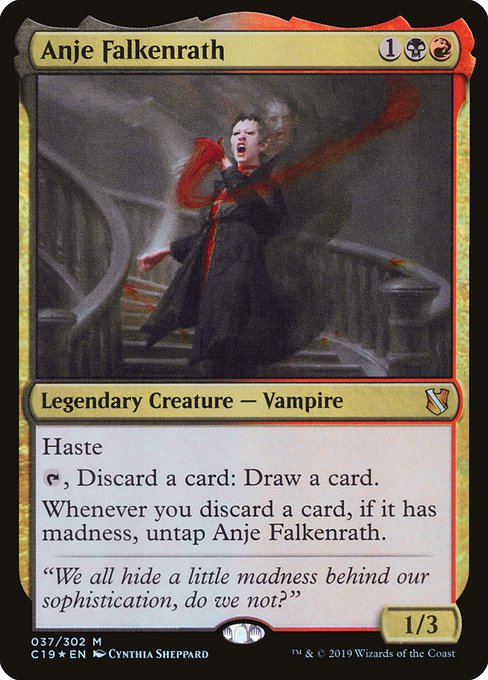
Look at the most commonly-played Commanders in Rakdos, and you’ll see a variety of different playstyles. We’re talking everything from reanimator, politics, and Madness/discard; to aristocrats, combo, and even -1/-1 counters. Conceivably, you could play a four-person pod of only Rakdos decks, and odds are pretty good that that they’d all be different. Not every guild can boast that diversity, but Rakdos can.
Card draw: Card draw in Rakdos is possible, but it comes at a price. At first glance, we have symmetrical effects with life loss, such as Spiteful Visions and Stormfist Crusader. Read the Bones and Costly Plunder continue the “paying more than mana” theme. If you tap into the aggressive creature side of red, you’re rewarded with card draw from damaging your opponents. Azra Oddsmaker is one such example, encouraging you to mix it up with others. Enabling Spectacle on Rix Maadi Reveler is another example of how card draw comes to those who get aggressive.
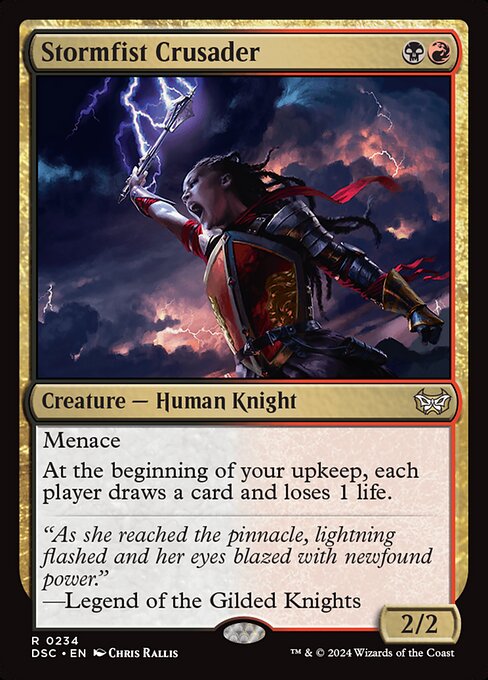
Card selection in Rakdos is another common element, whether it be through “looting” or “rummaging.” (As a brief aside, “looting” is when you draw a card first, and then discard a card for the second half of the spell. “Rummaging” is when you discard first, and then draw.) Those two affects, commonly found on the red side of the color pair, match well with black’s ability to get things back from the graveyard. While we’re still discarding cards here, they aren’t gone forever. Whether it be through your commander themselves, or recursion engines in your deck, the rummaging or looting can turn out to be a net positive in the end.
Board Wipes: When it comes to sweepers in Rakdos, there are tons of different monocolor options to choose from, but surprisingly few that are unique to the black-red pair. Spontaneous Combustion and Widespread Brutality offer Pyroclasm-like effects for creatures, whereas Rakdos, the Showstopper can offer some incremental but unpredictable value. Void is an interesting choice that can wreck a particular player in the late-game, and you could make the case that it’s more of a win-condition card than an outright board wipe.
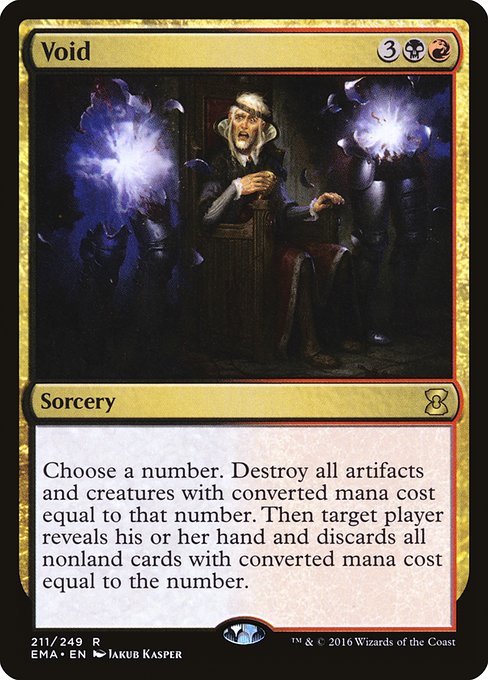
But when it comes to the monocolor options that Rakdos players can choose from, there are plenty of good options to work with. Vandalblast, Decree of Pain, Blasphemous Act, and Languish are all tried-and-true sweepers. If you’re playing with a deck that likes creature recursion, then Massacre Girl or Deathbringer Regent will get you repeated value throughout the course of the game.
Single Target Removal: If you came looking for single-target removal, then you will not be disappointed. Rakdos has removal in droves, and there are more good options than there are slots in your deck. Two of the standout multicolor hits are Terminate and Kologhan’s Command. War of the Spark brought us a variety of new planeswalkers into the format, so Bedevil, Dreadbore, and Angrath’s Rampage are all considerations for answering them. If you’re feeling risky, Phyrexian Purge can be used to your advantage with the higher life totals in Commander.
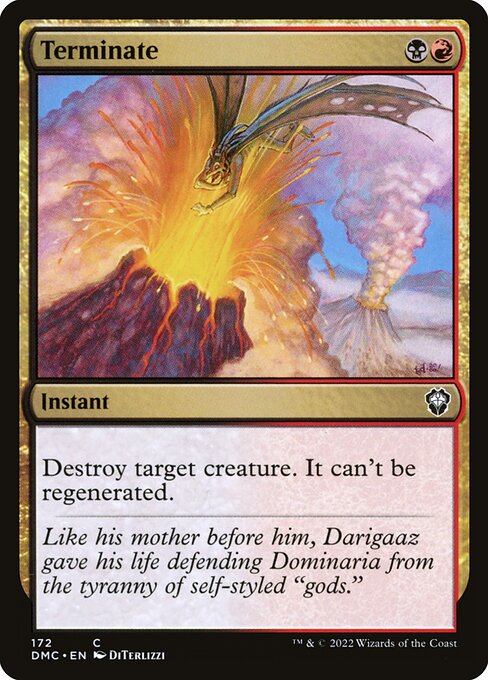
Looking into the monocolor options, Vraska’s Contempt, Muderous Rider, and Magmatic Sinkhole are versatile choices that also go after planeswalkers. Personally, I recommend taking a look at Tragic Slip: it’s one of the few ways that Rakdos decks can deal with Theros gods like Kruphix, God of Horizons.
Weaknesses
Enchantments. As mentioned in the prior articles, red and black are challenged when it comes to removing enchantments. It is only recently that they have gotten more flexible answers like Chaos Warp and Enchanter’s Bane. For Rakdos decks in particular, if they play up on graveyard recursion through a commander like Chainer, Nightmare Adept, Meteor Golem becomes another worthwhile option.
Ramp: This is a tricky area to work with in Rakdos. Throughout the game’s history, combo decks have employed the likes of Dark Ritual, Pyretic Ritual, Cabal Ritual, and more. However, that is usually with the intention of generating enough mana and spell count to cast Tendrils of Agony or Grapeshot. While those rituals are perfectly fine to play in a combo deck; if you’re looking for more sustainable ramp in Commander, we’re going to have to look elsewhere. Ramping won’t be as easy as some other decks at the table, but it can be done.

Treasure and Gold tokens are some of the best mechanics to happen to non-green decks in years. While they don’t close the gap on green’s ability to ramp, they definitely help give those non-green decks a catch up mechanism. Dockside Extortionist is one of the best examples of this card, and is easily abusable in Rakdos decks. Continuing along the mana token theme, Revel in Riches is both a win condition and a way of using board wipes to our advantage. Curse of Opulence allows us to both ramp up mana, as well as keep the heat on whichever player is in the lead.
Black Market is similar to this; and even though it restricts us to only black mana, it allows repeatable access to more mana as the game goes long. Red plays particularly well with artifacts in general, with Daretti, Scrap Savant, Goblin Welder, and Goblin Engineer working together to get extra value out of our artifacts. Expedition Map and Traveler’s Amulet can get multiple uses through these engines, not to mention the other value to be gained from recurring artifact creatures.
Moving Pieces: Rakdos suffers to some regard in being reliant on many moving pieces to contribute to a win. With its over reliance on the graveyard when it comes to certain combos, not to mention most aristocrats and reanimator decks, a Rakdos deck can be shut off completely by a savvy player recurring a Tormod’s Crypt, or a timely Scavenger Grounds activation. Employing cards like Elixir of Immortality can help, but there’s a strong argument that, unless you have a way to aggressively mill yourself, losing your graveyard to your own effect is just as disabling as having it wiped by an opponent.
In addition, most Rakdos win conditions involve causing damage. Any decks employing a modest ability to gain life can quickly outrace a Rakdos deck, especially when most of those races are to the bottom – and due to the symmetrical effects employed, these tend to be races that you’ll often be taking part in. Consider running cards like Erebos, God of the Dead, Everlasting Torment, or Archfiend of Despair.
Common Commanders and Archetypes
Aristocrats: If you like sacrificing creatures for value, then Rakdos has a variety of fun options to work with. Judith, Scourge Diva and Lyzolda, the Blood Witch offer ways to help control the board while offering value on their own. Garna, the Bloodflame has a different playstyle, favoring splashy turns that allow you to bring all of your newly-sacrificed creatures back from the brink. If you like getting as much mileage as you can out of Murderous Redcap, then these are the Rakdos Commanders for you.

Discard: As mentioned before, Anje Falkenrath of Commander 2019 provided a new angle for Rakdos players to operate on. However, in my opinion, Madness as a whole is still an underdeveloped mechanic in Commander. Nevertheless, there is value to be had off of discard-centric commanders. Waste Not and Bone Miser slot right in to any discard strategy. Neheb, the Worthy enables discard-centric cards, or even a minotaur subtheme if you so choose. And then there’s Malfegor—a risky but potentially tide-turning Commander to cast.
Tribal: Rakdos, Lord of Riots is a popular way to cast Eldrazi for free, so long as they’re the ones that don’t require Wastes to cast. If demons are more your style, Rakdos has a way of making those six- to eight-mana costs look a lot cheaper. Wort, Boggart Auntie lets you play Goblins in Commander without putting the same target on your back that Krenko, Mob Boss brings. A format-warping bomb in Innistrad Limited, Olivia Voldaren offers play Vampire tribal, with the bonus ability to steal your opponent’s most threatening creatures.
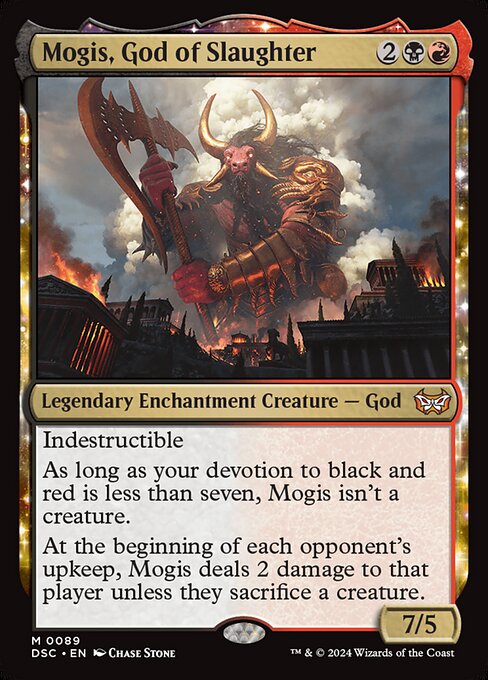
Other Oddities: Here is where we can really get into the weeds, but in the best way. Xantcha, Sleeper Agent offers open-ended way of building a Rakdos table politics deck, perhaps using Disrupt Decorum and Sower of Discord. Mogis, God of Slaughter is for “group slug” players, whose goal it is to slow the game down and grind their opponents into the ground through incremental advantages.
Greven, Predator Captain is a recent addition to the world of Voltron, with a sacrifice subtheme. Players can take out their opponents with a life point sink like Necropotence, but still be able to recoup resources if they choose to sacrifice a creature to Greven. Chainer, Nightmare Adept makes a potent threat for reanimator, and will let players live the dream of casting Solemn Simulacrum or Combustible Gearhulk over and over again. Finally, The Scorpion God helps Rakdos gain advantage from -1/-1 counters.
Final Take
Rakdos doesn’t claim to be the strongest, most consistent color pair out there, but they aren’t to be underestimated. With a variety of directions that these decks can be built, you have a lot of creative freedom to work with. That diversity can keep anyone coming back for more, as Rakdos continues to grow and develop in the Commander format.
Thanks for reading this edition of the guild primer; we’ll be back for more soon!
Travis is a Connecticut-based player and writer, who has been turning things sideways since Starter 1999. He primarily plays Commander, Pauper, and Modern, and has a passion for introducing new players to the game. When he isn’t attacking with red creatures, he can be found mountain biking or playing the guitar. You can follow his exploits here on Twitter and Instagram.

